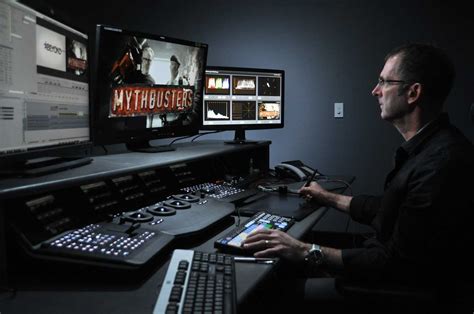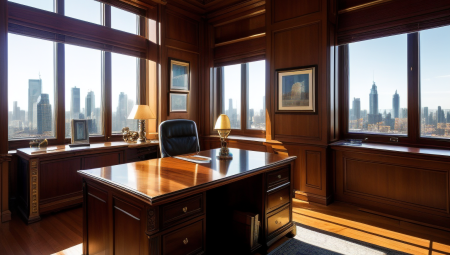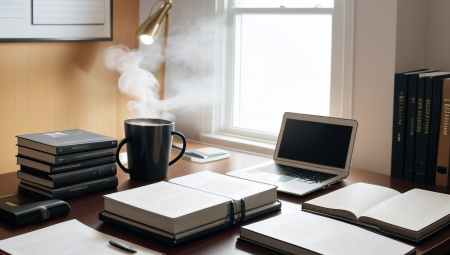Lights, camera, action! While the spotlight often shines on the actors and directors of a film, the art of film editing plays a crucial role in shaping the final product that audiences see on the big screen. In this blog post, we’re delving into the fascinating world of film editing and exploring the various aspects that make it such a vital component of the filmmaking process. From understanding the role of a film editor to mastering the technical aspects and exploring different editing techniques, we’ll take a comprehensive look at what goes on beyond the camera. We’ll also examine the impact of editing on the mood and atmosphere of a film, as well as the collaborative efforts involved in working with directors and cinematographers. Join us as we navigate the challenges and intricacies of film editing, and discover how sound and music are utilized to enhance the editing process. By the end, you’ll gain a deeper appreciation for the cohesive and engaging final cut that comes to life through the art of film editing.
Table of Contents
The Art of Film Editing
Film editing is a crucial and often undervalued aspect of the filmmaking process. It involves selecting, cutting, and assembling various shots to create a cohesive and engaging story. The role of a film editor is to ensure the continuity, rhythm, and pacing of the film, making it a key player in the storytelling process.
Mastering the technical aspects of film editing is essential for any aspiring editor. This includes understanding different editing software, mastering various editing techniques, and staying updated with the latest technological advancements in the field.
Moreover, a skilled film editor should be able to collaborate with directors and cinematographers to bring their vision to life. This involves understanding the director’s creative vision, working closely with the cinematographer to ensure visual consistency, and making creative decisions that align with the overall storytelling goals.
Ultimately, the art of film editing lies in its ability to impact the mood and atmosphere of a film. Through the use of specific editing techniques, sound design, and music selection, a film editor has the power to evoke different emotions and create a truly immersive viewing experience for the audience.
Understanding the Role of a Film Editor
Film editing is a crucial and often underappreciated aspect of the filmmaking process. It is the job of the film editor to take the raw footage and shape it into a cohesive and compelling narrative. Editors work closely with directors and cinematographers to bring the vision of the film to life. They are responsible for making countless creative decisions that ultimately determine the overall look and feel of the movie.
One of the primary responsibilities of a film editor is to piece together the footage in a way that effectively tells the story. This involves choosing the best takes, arranging the scenes in a logical and engaging sequence, and making cuts to trim unnecessary or redundant moments. The editor must also consider the pacing and rhythm of the film, as well as the emotional impact of each edit.
Additionally, film editors are often tasked with enhancing the visual and auditory aspects of the film. They may work with visual effects artists to seamlessly integrate computer-generated imagery, as well as sound designers and composers to ensure that the audio complements the visuals. Through all of these tasks, the film editor plays a crucial role in shaping the mood and atmosphere of the film.
Ultimately, the work of a film editor is essential to the success of a movie. Their ability to craft a cohesive and engaging final cut can greatly influence how audiences perceive and connect with the story. Understanding the role of a film editor is key to appreciating the artistry and skill that goes into creating a captivating cinematic experience.
Importance of Film Editing in Storytelling
Film editing plays a crucial role in shaping the overall storytelling experience for the audience. It is the final stage in the filmmaking process where the individual shots are carefully selected, trimmed, and arranged to create a cohesive narrative. The editor’s decisions regarding the pacing, rhythm, and sequencing of scenes have a direct impact on how the story unfolds and engages the viewers.
Furthermore, film editing has the power to enhance emotional impact and immerse the audience in the world of the film. Through the use of different editing techniques such as montage, cutaways, and transitions, the editor can manipulate the pace and tension of the story, effectively influencing the audience’s emotions and perceptions.
Additionally, editing is instrumental in maintaining continuity and clarity within the narrative. It ensures that the events and actions depicted in the film are presented in a logical and coherent manner, preventing any confusion or disconnection for the audience. Without precise editing, the story may lose its impact and fail to effectively convey its intended message.
Overall, film editing is a fundamental element in the art of storytelling, as it holds the power to transform raw footage into a captivating and evocative cinematic experience. It is through the skillful manipulation of visuals and sounds that the editor brings the story to life and leaves a lasting impression on the audience, underscoring the vital importance of film editing in the storytelling process.
Mastering the Technical Aspects of Film Editing
Mastering the technical aspects of film editing is crucial for any aspiring film editor. Understanding the tools and techniques used in the process is essential for creating a polished and professional final cut. One of the key technical skills in film editing is mastering the use of editing software such as Adobe Premiere Pro or Final Cut Pro. These platforms offer a wide range of features and functionalities that allow editors to manipulate footage, add visual effects, and create seamless transitions.
Another important technical aspect of film editing is understanding the different file formats and resolutions. This knowledge is necessary for delivering the final product in the required format, whether it be for television broadcast, online streaming, or theatrical release. A film editor must also be familiar with the various video codecs and compression methods to ensure the highest quality playback while keeping file sizes manageable.
Color correction and grading are also technical skills that are essential for film editors. Manipulating the color and tone of footage can greatly impact the overall look and feel of a film. Understanding how to adjust exposure, contrast, and saturation can dramatically enhance the visual appeal of a project. Additionally, knowledge of different color spaces and the use of color charts can ensure consistent color reproduction across various displays.
Lastly, mastering the technical aspects of film editing involves understanding the intricacies of sound design and editing. This includes working with different audio tracks, adding sound effects, and mixing dialogue and music. Utilizing audio editing software and understanding sound mixing techniques are crucial for creating an immersive and engaging auditory experience for the audience.
Exploring Different Film Editing Techniques
When it comes to film editing, there is no one-size-fits-all approach. There are a myriad of techniques that editors can use to create a compelling and cohesive final product. One of the most common techniques is the use of the cutaway, which involves inserting a shot of something unrelated to the main action in order to add context or create a transition. This technique can be used to build tension, create juxtaposition, or simply keep the audience engaged.
Another popular technique is the match cut, which seamlessly transitions from one scene to another by finding something in the first shot that is similar to something in the next. This can create a sense of continuity and connection between two seemingly unrelated scenes. Cross-cutting is yet another technique that involves cutting back and forth between two or more scenes happening simultaneously, creating tension and building suspense.
Furthermore, montage is a technique used to compress time and convey information quickly through a rapid succession of images. This can be used to show the passage of time or to convey a character’s internal thoughts and emotions. Finally, parallel editing involves cutting between two or more related actions to show that they are happening simultaneously. This can heighten suspense and create a sense of urgency.
These are just a few examples of the many techniques that film editors have at their disposal. By exploring and understanding these various techniques, editors can effectively manipulate the emotions and perceptions of the audience, and ultimately create a more engaging and impactful film.
The Impact of Editing on Mood and Atmosphere
Editing is a crucial element in filmmaking, and it plays a significant role in shaping the mood and atmosphere of a film. Through the careful selection and arrangement of shots, film editors have the power to evoke specific emotions and create a unique ambiance that contributes to the overall storytelling experience.
One of the ways in which editing impacts mood and atmosphere is through the pacing of the film. By controlling the rhythm and tempo of the visual sequences, editors can build tension, create suspense, or establish a sense of calm. This manipulation of time and movement directly influences how audiences perceive the emotional tone of the story.
In addition, film editors use various techniques such as color grading, transitions, and visual effects to enhance the mood and atmosphere of a film. The use of color can convey warmth, coldness, or even nostalgia, while transitions can seamlessly guide viewers through different emotional beats. Furthermore, judiciously applied visual effects can transport audiences to otherworldly settings and trigger specific emotional responses.
Overall, the impact of editing on mood and atmosphere is undeniable. Through the skillful arrangement of visual and auditory elements, film editors have the ability to shape the emotional landscape of a film, drawing audiences into the story and fostering a deeper connection with the characters and their experiences.
Collaborating with Directors and Cinematographers
Collaborating with directors and cinematographers is an essential aspect of the film editing process. It involves working closely with the creative visionaries behind the camera to bring their ideas to life through editing. This collaboration requires effective communication, trust, and a mutual understanding of the storytelling goals.
Working with directors and cinematographers allows the film editor to gain insight into the visual language of the film. By understanding the specific shots, lighting, and framing choices made by the cinematographer, the editor can enhance the storytelling through seamless transitions and impactful visual sequences.
Furthermore, collaborating with directors and cinematographers provides the film editor with valuable feedback and direction. This collaboration allows for a dynamic exchange of ideas, resulting in a final cut that reflects the collective creative input of all involved in the filmmaking process.
Ultimately, collaborating with directors and cinematographers is a symbiotic relationship that is essential for creating a cohesive and engaging final product. The mutual respect and understanding between these creative roles ensure that the visual and narrative elements of the film align to deliver a powerful storytelling experience.
Navigating the Challenges of Film Editing
Film editing is a crucial part of the filmmaking process, and like any creative endeavor, it comes with its own set of challenges. From managing tight deadlines to working with a variety of personalities, film editors must navigate a range of obstacles to achieve a cohesive and engaging final cut.
One of the main challenges film editors face is managing the sheer volume of footage they have to work with. Sorting through hours of footage to find the perfect shots can be a time-consuming and daunting task, especially when working on tight deadlines. It requires a great deal of patience and attention to detail to ensure that every frame serves the story.
Another challenge is collaborating with directors and cinematographers, who may have their own vision for the film. While it’s important to be open to feedback and suggestions, it can be difficult to balance the creative input of others with your own artistic vision. Navigating these relationships and finding a middle ground can be a delicate balancing act.
Furthermore, the technical aspects of film editing can present their own challenges. From mastering various editing software to understanding the intricacies of color grading and sound design, film editors must constantly stay updated on the latest tools and techniques. Keeping up with these technical advancements while still maintaining a strong narrative focus can be a complex juggling act.
Using Sound and Music to Enhance Editing
Sound and music play a crucial role in enhancing the overall impact of a film. When it comes to film editing, the use of sound and music can significantly elevate the storytelling and emotional experience for the audience.
One of the key ways to use sound and music to enhance editing is by paying close attention to the timing and placement of sound effects and music cues. By carefully aligning these elements with the visual cuts and transitions, editors can create a seamless and immersive viewing experience.
In addition to timing, the selection of music is also of utmost importance. The right choice of music can set the tone and enhance the mood of a scene. Whether it’s a subtle background score or a powerful musical climax, the music can bring out emotions and create a deeper connection with the audience.
Furthermore, sound design and mixing are essential aspects of using sound to enhance editing. By adjusting the sound levels, creating spatial soundscapes, and incorporating foley effects, editors can bring a sense of realism and depth to the visuals, making the overall experience more immersive and impactful.
Achieving a Cohesive and Engaging Final Cut
When it comes to achieving a cohesive and engaging final cut, film editing plays a crucial role in bringing together all the elements of a movie. From pacing and rhythm to visual storytelling and emotional impact, the film editor is responsible for shaping the raw footage into a polished and coherent narrative.
Using editing techniques such as continuity editing, montage, and match cuts, the film editor is able to create seamless transitions and maintain the flow of the story. By paying attention to the smallest details, they can ensure that the final cut is not only technically flawless but also emotionally resonant.
Collaborating with directors and cinematographers is also key in achieving a cohesive final cut. Understanding the vision of the director and the visual language of the cinematographer allows the editor to make informed creative decisions that align with the overall tone and style of the film.
Furthermore, the use of sound and music can enhance the editing process, adding another layer of depth and emotion to the final cut. By carefully selecting the right sound effects and musical cues, the film editor can further immerse the audience in the story and create a truly engaging viewing experience.





